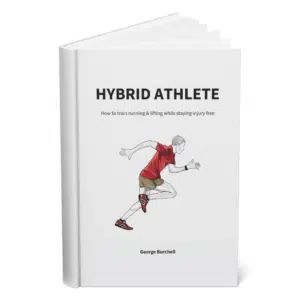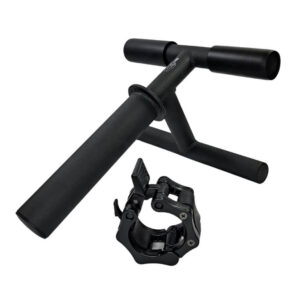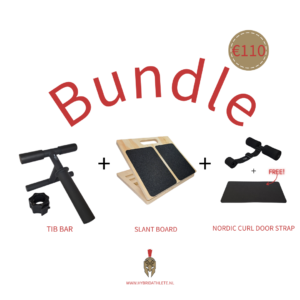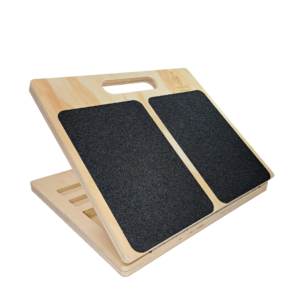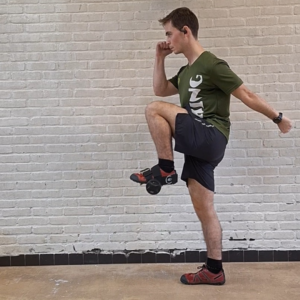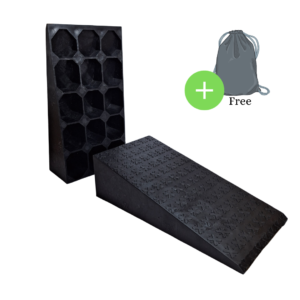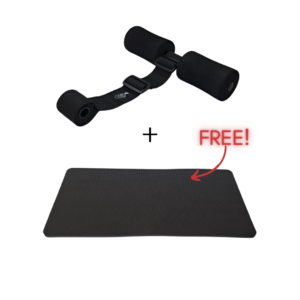
Table of Contents
Let’s talk about a power-packed combo that’s revolutionizing workouts – blending bodyweight and barbell training. As someone who’s journeyed from being a knees-over-toes skeptic to a devoted practitioner, I’ve got some insights and chuckles to share.
So, grab a protein shake or a quick healthy snack, and let’s dive in.
Understanding Bodyweight and Barbell Training
Let’s kick things off by breaking down the hybrid athlete dynamic duo of fitness: bodyweight and barbell training.
Bodyweight Training
First up, bodyweight training – it’s all about using your own weight to build strength, flexibility, and endurance. Think push-ups, pull-ups, and those gravity-defying handstands you see on Instagram.
The beauty of it? You can do these exercises anywhere, no equipment needed. Plus, they’re fantastic for improving body control and agility – essential skills whether you’re a weekend warrior or a seasoned hybrid athlete.
Barbell Training
Now, enter barbell training – the undisputed champ of building raw strength and muscle mass.
When you’re hoisting those iron bars, you’re not just pumping iron; you’re engaging multiple muscle groups, improving bone density, and boosting your metabolic rate. Squats, deadlifts, bench presses – these aren’t just exercises, they’re the foundation for a robust and powerful physique.
Bodyweight and Barbell Training Combo
This is where the magic happens – combining bodyweight and barbell training into a program that allows you to benefit from both.
When bodyweight and barbell exercises join forces, they create a training synergy that’s hard to beat. For hybrid athletes, this combo means you’re not just strong, you’re versatile. You’re building muscle while enhancing mobility, balance, and endurance.
So whether you’re lifting, pushing, or pulling, you’re preparing your body for just about anything life throws your way.
The Essentials of Bodyweight Training
In the universe of bodyweight training, certain exercises stand as the foundation. These include push-ups, pull-ups, lunges, toes-to-bar, bodyweight squats, and the diverse world of calisthenics. Let’s delve into each of these and explore how to progress and regress them to fit any fitness level.
Push-Ups
Starting with the classic push-up, it’s a full-body exercise that targets the chest, shoulders, and core. For beginners, a regression could be knee push-ups, focusing on maintaining proper form. As you advance, try elevating your feet or experimenting with one-arm push-ups to increase the challenge.
Pull-Ups
Pull-ups are essential for upper body strength, particularly targeting the back and biceps. If you’re just starting out, using resistance bands for assisted pull-ups can help. As you get stronger, progress to unassisted pull-ups, and eventually, add weight for an extra challenge.
Lunges
Lunges are a fantastic lower body workout, engaging the quads, glutes, and hamstrings. Beginners might start with stationary lunges, ensuring proper form and balance. To increase difficulty, try walking lunges, or add a jump for a plyometric variation.
Toes-To-Bar
This exercise is excellent for core strength and agility. If you’re new to it, begin with hanging knee raises to build up your core and grip strength. Progress to the full toes-to-bar movement as you get stronger.
Bodyweight Squats
Squats work almost every muscle in the lower body. Start with basic bodyweight squats, focusing on depth and form. For progression, add jump squats or one-legged squats (pistol squats) for a higher-intensity workout.
Calisthenics
Calisthenics is not just an exercise but a discipline that encompasses a variety of movements. Begin with basic movements like jumping jacks and progress to more complex movements like muscle-ups or planche holds.
The beauty of bodyweight exercises lies in their versatility – they can be regressed to accommodate beginners or progressed to challenge even the most advanced athletes. The key is to focus on proper form and controlled movements. Start at a level that is challenging yet achievable, and gradually progress as your strength and skills improve.
Remember, it’s not about how many reps you can do – it’s about how well you can do them.
Advantages of Bodyweight Training
- Convenience and Accessibility: Can be performed anywhere, anytime, without needing equipment.
- Enhanced Body Control and Balance: These workouts improve agility, balance, and coordination, offering more functional fitness benefits.
- Lower Injury Risk: Generally, bodyweight exercises have a lower risk of injury, as they are less taxing on the joints and don’t involve extra weight.
Disadvantages of Bodyweight Training
- Limited Overload: Progressing with bodyweight exercises often requires adapting exercise form or technique, which can be less straightforward than simply adding weight.
- Potential Plateaus: It can be challenging to continue gaining strength or muscle once you become very proficient at bodyweight exercises – increasing to a high rep count may not be enough.
- Less Effective for Targeted Muscle Building: While they engage multiple muscle groups, it can be more challenging to isolate and build specific muscles as effectively as with barbell exercises.
Maximizing Gains with Barbell Exercises
Barbell exercises are fundamental in any strength training regime, especially for those looking to build serious muscle and power.
Let’s focus on the quintessential lifts: squats, deadlifts, overhead press, bent-over rows, and bench press. Each of these plays a pivotal role in developing overall strength and contributing to muscle building and hypertrophy.
Squats
Often hailed as the king of all exercises, squats primarily target the lower body, engaging the quadriceps, hamstrings, glutes, and even the core. They’re not just about building leg strength; squats also improve overall body stability and mobility. By regularly increasing the weight, you can continually challenge your muscles, leading to significant gains in both strength and size.
Deadlifts
Deadlifts are a powerhouse move, working almost every muscle in the body, with a focus on the posterior chain (the backside of your body). This exercise is crucial for developing a strong back, glutes, and hamstrings. It’s not just about lifting the weight; proper form in deadlifts ensures maximum muscle engagement and reduces the risk of injury.
Overhead Press
Moving to the upper body, the overhead press is a stellar exercise for building shoulder strength and size. It also engages the upper chest and triceps, offering a comprehensive upper-body workout. Overhead presses are not just about brute strength; they require and develop significant stability in the core and lower body as well.
Barbell Row
The barbell row is another versatile exercise targeting the back, particularly the latissimus dorsi (lats), rhomboids, and traps. It also involves the biceps and forearms, making it an excellent compound exercise for upper body strength.
Bench Press
Last but not least, we have the bench press. It’s a staple in building chest, shoulder, and tricep strength. Regularly incorporating the bench press into your routine will not only increase your upper body strength but also contribute to a more muscular and defined chest.
Barbell training plays a vital role in muscle building and hypertrophy. Unlike machines, barbell exercises require the engagement of multiple muscle groups (aka compound exercises), offering a more complete workout. This type of training also allows for a greater range of motion, which is crucial for muscle development. Furthermore, barbells enable progressive overload – gradually increasing the weight – which is key to muscle growth.
Advantages of Barbell Training
- Strength and Muscle Building: Enables heavy lifting, essential for building significant muscle mass and raw strength.
- Progressive Overload: It’s easier to incrementally increase weight, enabling continuous strength gains.
- Targeted Muscle Training: They allow for specific muscle targeting, helping to develop and strengthen particular muscle groups.
Disadvantages of Barbell Training
- Risk of Injury: Incorrect form or overloading can lead to injuries, especially in joints and the back.
- Equipment Dependency: Typically requires access to a gym or owning various weights, which may not be suitable for everyone.
- Less Functional Movements: Some exercises may not mimic everyday movements, potentially offering less functional fitness benefits.
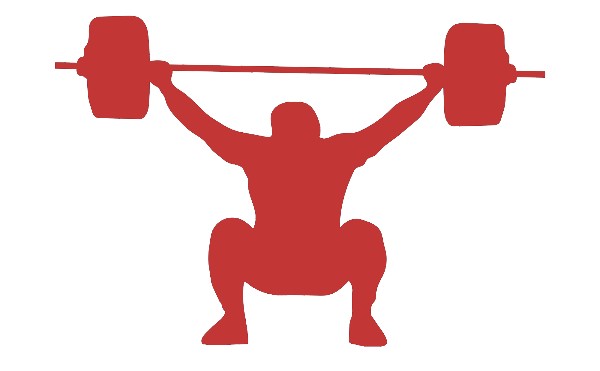
How To Structure Your Bodyweight and Barbell Training
Crafting an effective workout routine that blends bodyweight and barbell training involves focusing on push, pull, and leg exercises for balanced full-body development.
- Push: Target chest, shoulders, and triceps with push-ups and bench press.
- Pull: Tackle the back, and biceps with pull-ups and rows.
- Legs: Strengthen lower body with squats and lunges, and barbell squats and deadlifts.
The next thing you’ll have to take care of is splitting your bodyweight and barbell training sessions in a smart way.
- Training Split: Aim for a 3-4 day weekly split, alternating between barbell exercises.
- Exercise Selection: Mix push-ups, pull-ups, and lunges on bodyweight days; squats, deadlifts, and presses on barbell days.
- Progressive Overload: Increase reps and difficulty for exercises; gradually add weight to the bar.
A Sample of a Bodyweight and Barbell Training Weekly Layout:
- Monday (Bodyweight – Push Focus): Push-ups, dips, handstand push-ups
- Tuesday (Barbell – Pull Focus): Deadlifts, barbell rows, bicep curls
- Wednesday (Bodyweight – Leg Focus): squats, lunges, calf raises
- Thursday (Barbell – Push Focus): Bench press, overhead press, tricep extensions
- Friday (Bodyweight – Pull Focus): Pull-ups, inverted rows, chin-ups
- Saturday (Barbell – Leg Focus): Barbell squats, Romanian deadlifts, leg press, tib raises
Special Focus: Injury Prevention and Knees Over Toes Training
As a hybrid athlete, alternating between bodyweight and barbell training will take a toll on your body. That’s why we have to mention body bulletproofing, aka injury prevention.
Injury prevention is a critical component of any training program, especially when combining diverse methods like bodyweight and barbell exercises. A key strategy in this domain is the incorporation of ‘knees over toes‘ exercises. This approach, often misunderstood, is pivotal in building resilience and mobility, particularly in the knees.

Incorporating Knees Over Toes Exercises
- Objective: These exercises are designed to strengthen the muscles around the knees, enhance joint stability, and improve overall leg strength.
- Examples: Include exercises like the ‘ATG’ (Ass to Grass) squat, where the knees track over the toes, and the ‘Nordic curl’ for hamstring strength. Another effective movement is the ‘sissy squat‘, which emphasizes quadriceps strength and knee stability.
- Progression: Start with light or assisted versions and gradually increase intensity. The focus should be on control and smooth movement rather than speed or weight.
Importance of Proper Form and Range of Motion in Both Bodyweight and Barbell Training
- Proper Form: Maintaining correct form is crucial in all exercises, but especially in knees-over-toes movements. This ensures that the correct muscle groups are engaged, which in turn reduces the risk of injury.
- Range of Motion: Working through a full range of motion helps to develop strength evenly, giving your joints functional mobility. This is particularly important in preventing injuries, as it ensures that muscles and joints are not only strong but also adaptable to different stressors.
Knees-over-toes exercises, combined with a focus on proper form and a full range of motion, create a solid foundation for a more resilient and capable body.
Remember, injury prevention isn’t just about avoiding harm; it’s about building a body that’s more robust, flexible, and ready for any challenge.
Bodyweight and Barbell Training - The Conclusion
As we wrap up our fitness odyssey, let’s circle back to the core message – the fusion of bodyweight and barbell training.
It’s a powerful strategy for achieving a strong, versatile, and well-rounded physique. This dynamic duo offers the best of both worlds – the agility and control from bodyweight exercises and the raw power and muscle growth from barbell training. It’s not just about looking good; it’s about building a body that’s capable, resilient, and prepared for life’s challenges.
So, lace up your trainers, chalk up your hands, and get ready to embark on this exciting journey of bodyweight and barbell training.

